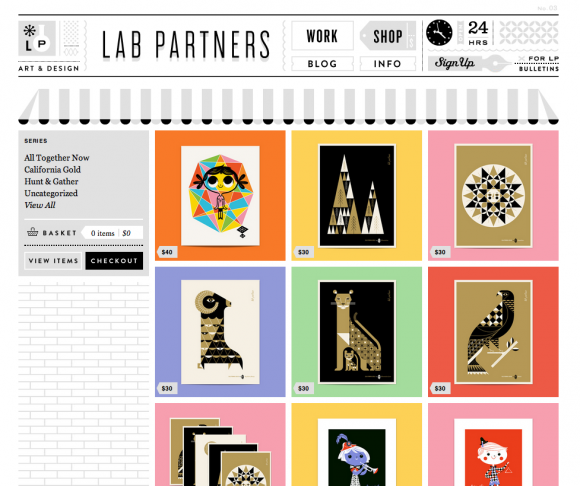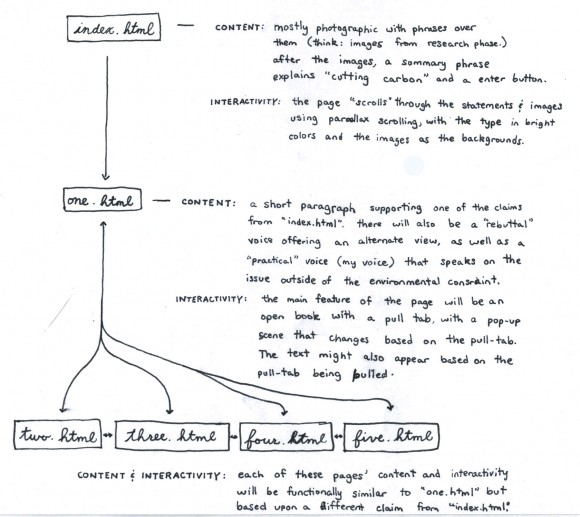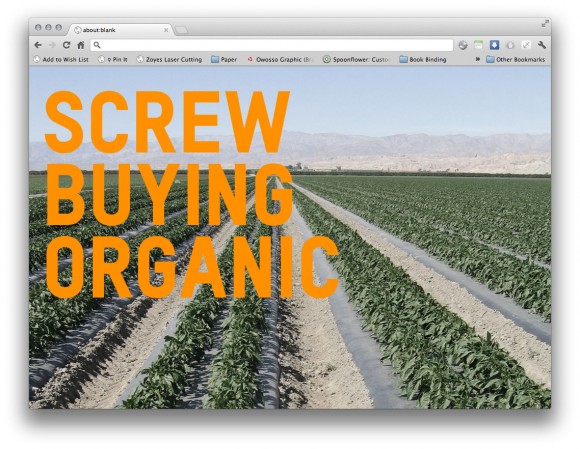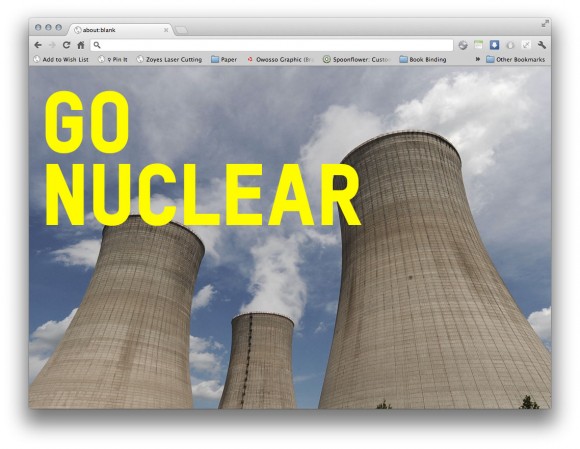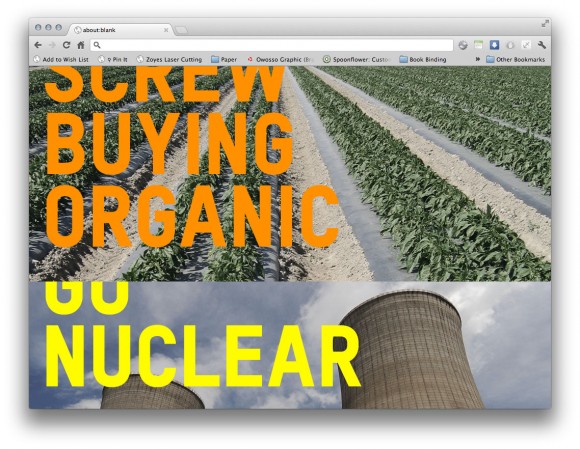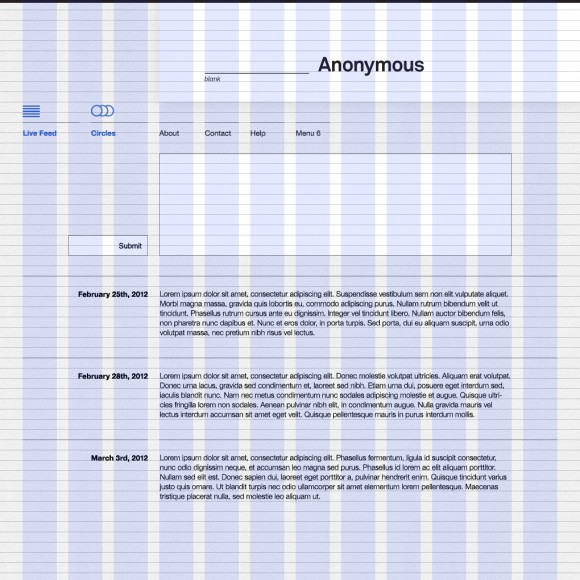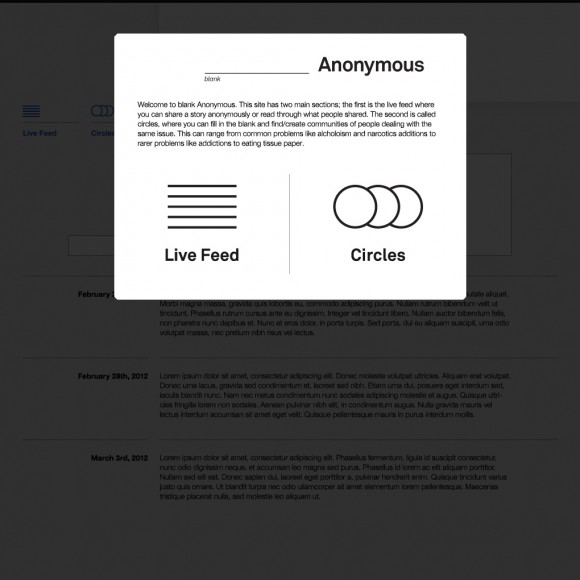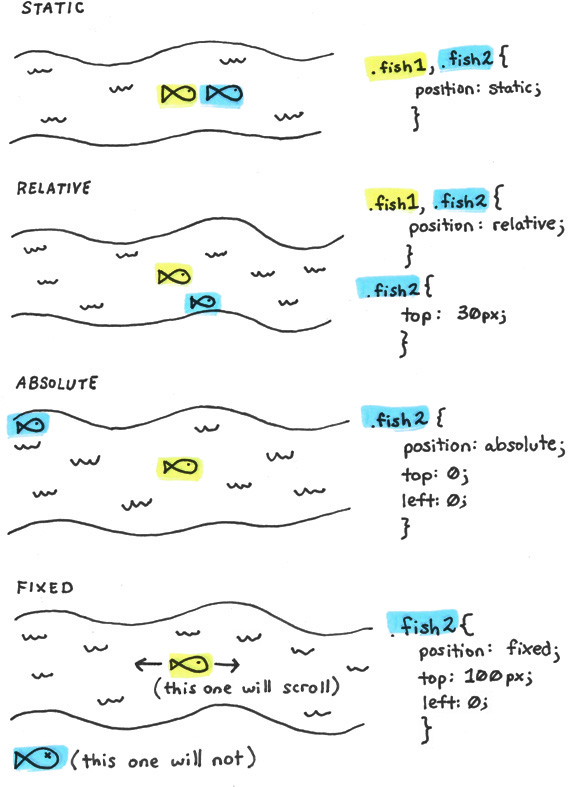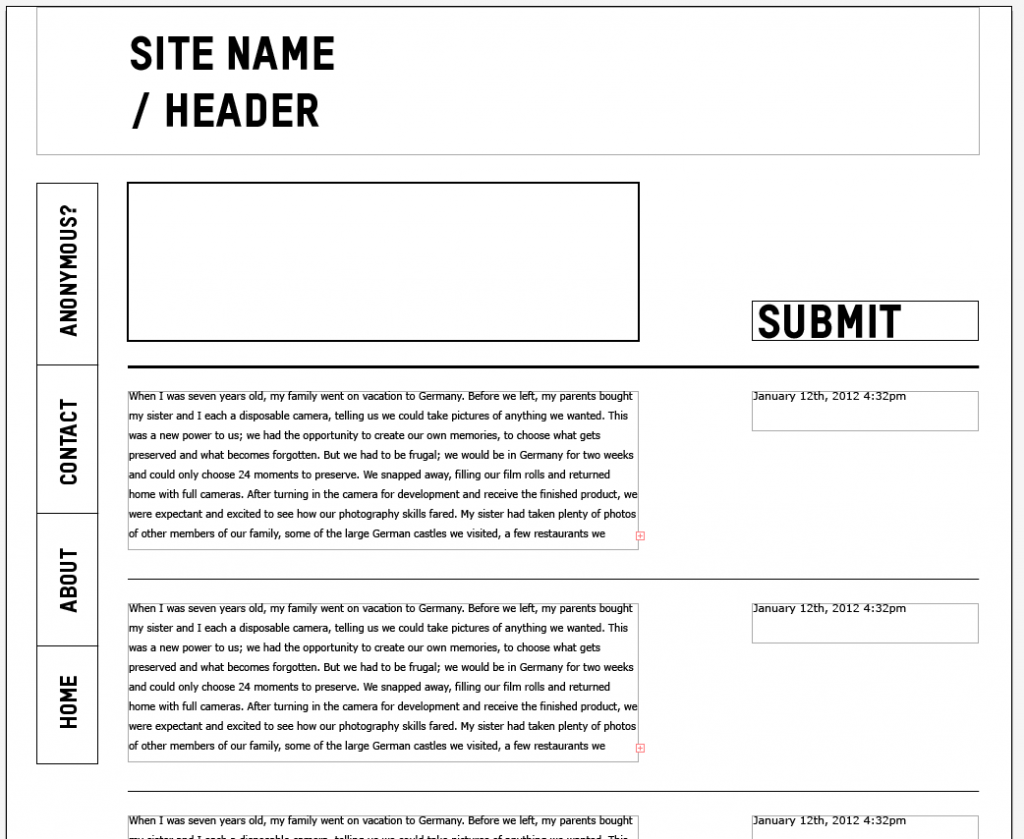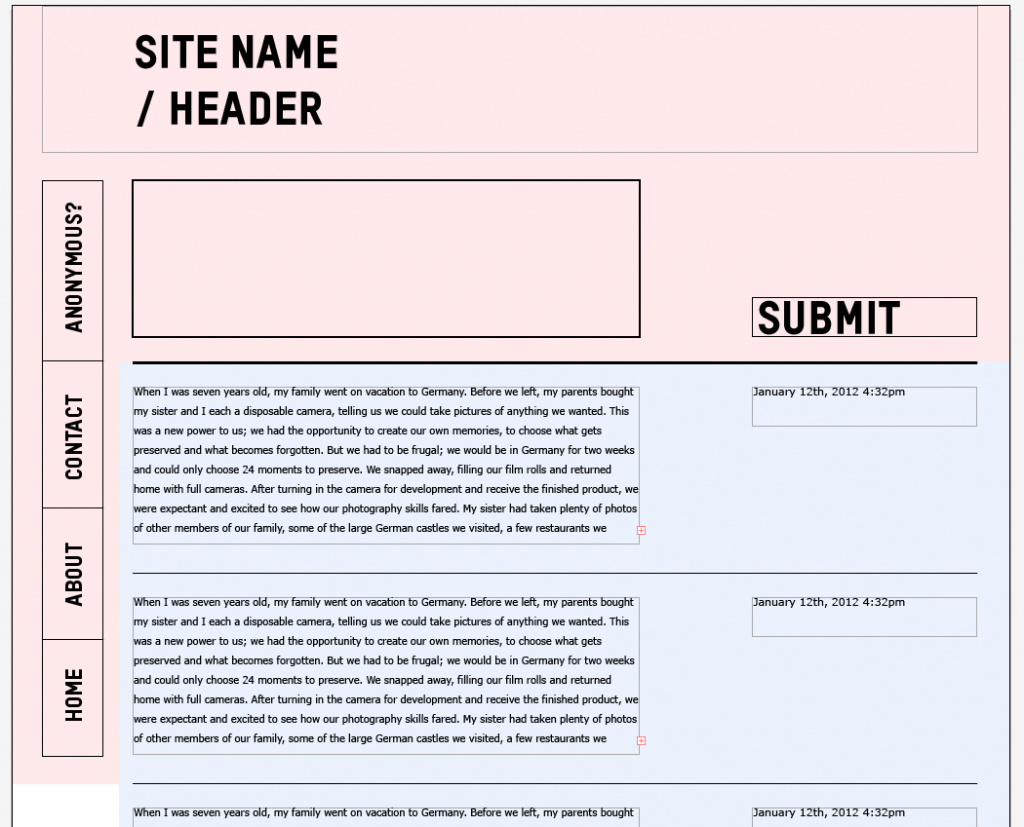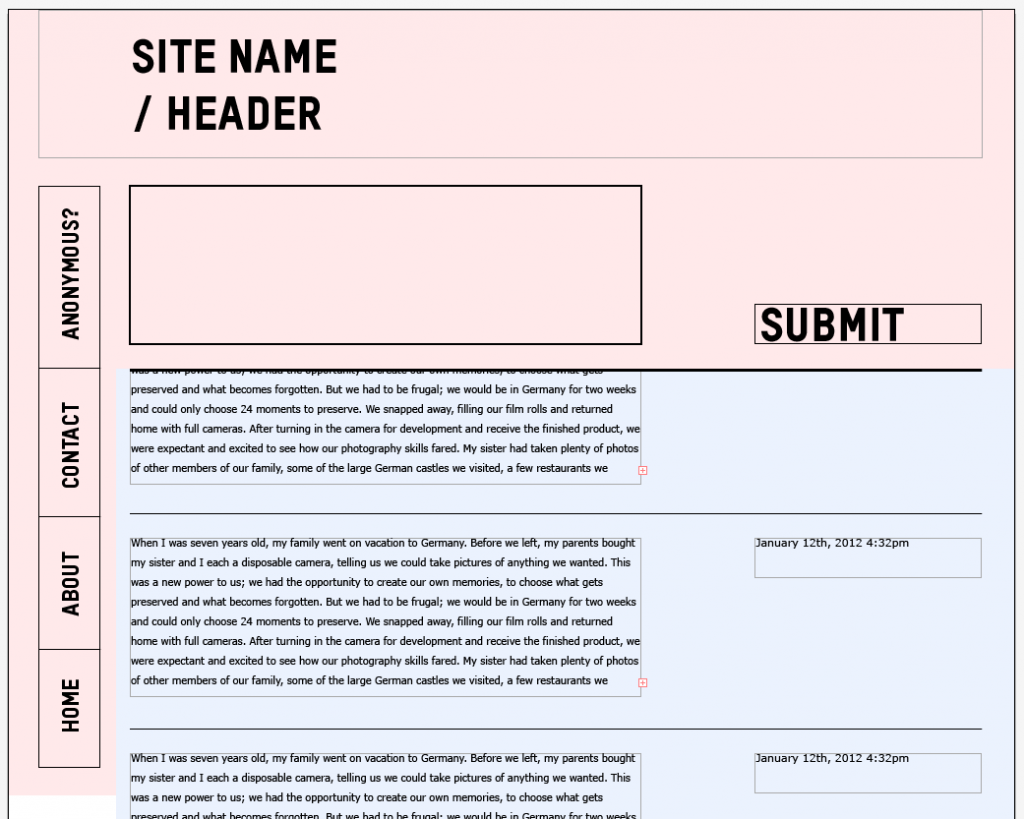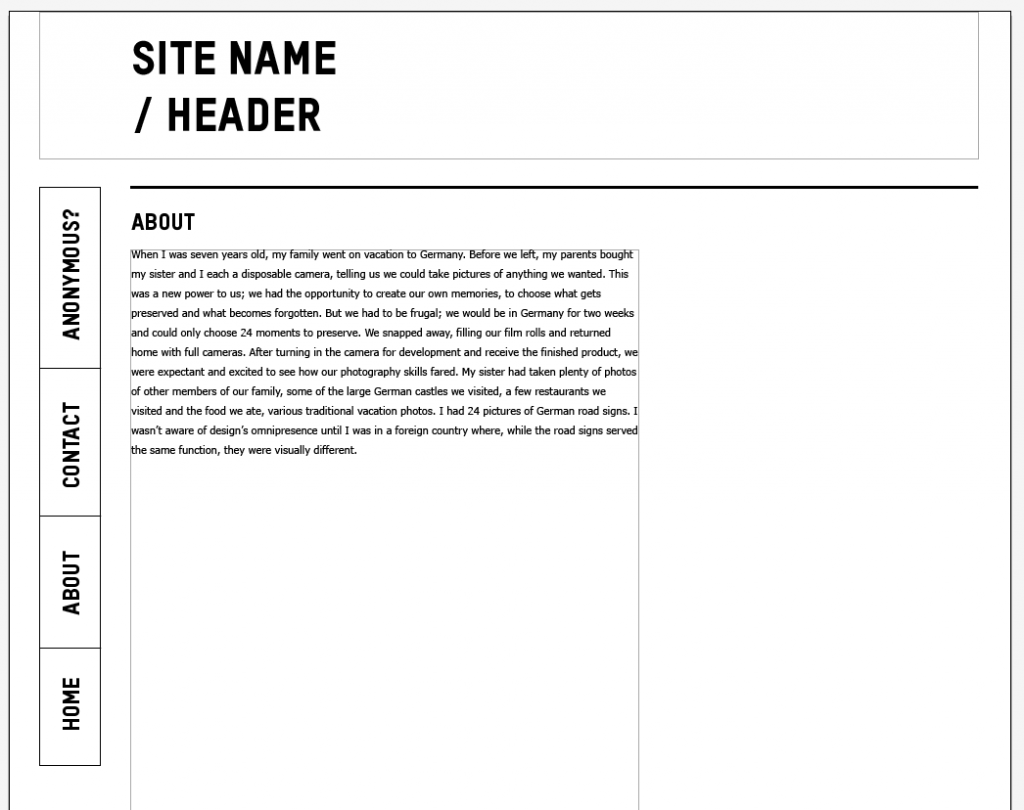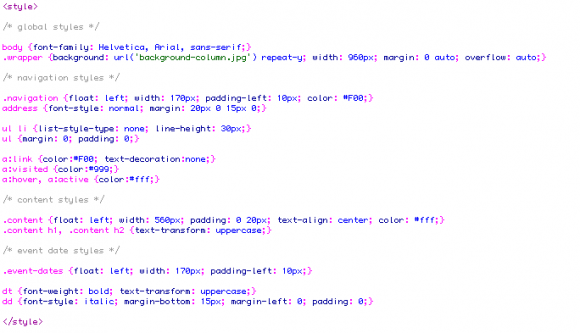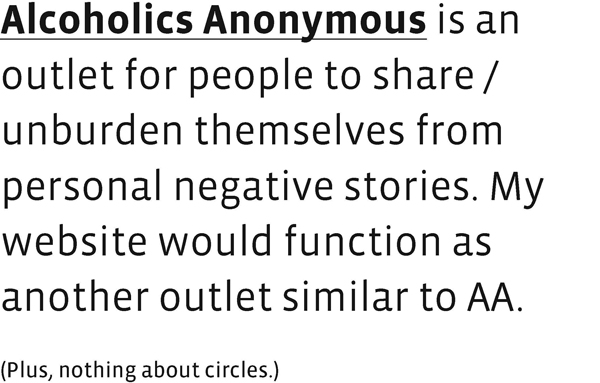In Class Exercise: Navigation
1. How do you know which items are clickable? Is it color? Placement? Does something change on the hover?
I am conditioned as a web user in a traditional website to find the “menu area,” this will contain the links I need to navigate through my site. I expect to find it at the top of a page, and unsurprisingly, Lab Partners and Trent Walton’s portfolio site do not disappoint.
What’s more, I would expect the name of the site or the logomark for the site, typically found in the top left corner, to return me back to the ‘landing’ page for the site. Both site behave as expected.
As it stands, I have a pretty good idea how to navigate either site, but to reinforce what is clickable and what isn’t, both sites have hover states for their links, both introducing color into the page.
Also note: both menus are delineated by lines. In both site too, the footers are also ‘blocked-off’ from the content of the page with lines:
2. How does the navigation in each site relate to the story or concept being portrayed?
The design of the Lab Partner’s menu reflects the design of the site, very 60’s pop art feel. Likewise, Trent Walton’s menu design mirrors the clean and uncluttered text-based nature of the rest of the site.
The functional design of each site doesn’t play too much into the overall concepts of each site, other than the fact that each is simple and clean, relating to the clean and simple site designs. Other sites, like the Annenberg Community Beach House site where the navigation feels intrusive or unintuitive, much like the rest of the site.
3. What role does user play in the reveal of information/content?
The interaction of the role over in both sites adds color to the menu system in both cases, but not further content is revealed. Both menus would function just as well (but not as well aesthetically) without the interactivity.
4. Are you able to tell where you are within the site? How you got there? How to go back? Where to go next? What visual indicators provide you with that information?
No. Well, yes. Sort of.
Take a look at Lab Partner’s shop page:
I know I’m on the shop page because I just clicked the “Shop” button in the menu. Maybe someone emailed me a link directly to this page, I know I’m on the shop page because the URL is shop.lp-sf.com. And without seeing the URL, I know I’m on a shop page because the images have prices near them, the sidebar makes reference to a “basket” and uses terms like “checkout” and the design incorporates elements like the awning and the brick pattern to the left.
But nothing specific in the navigation really tells me I’m on the shop page. (But it doesn’t need to.)
Both navigation systems on both sites function this way; with no reinforcement telling you what page you’re on.








